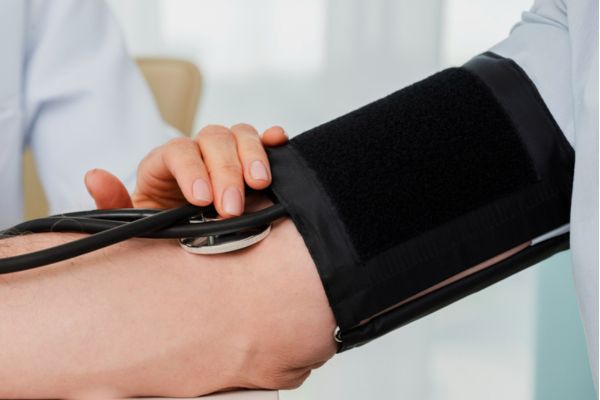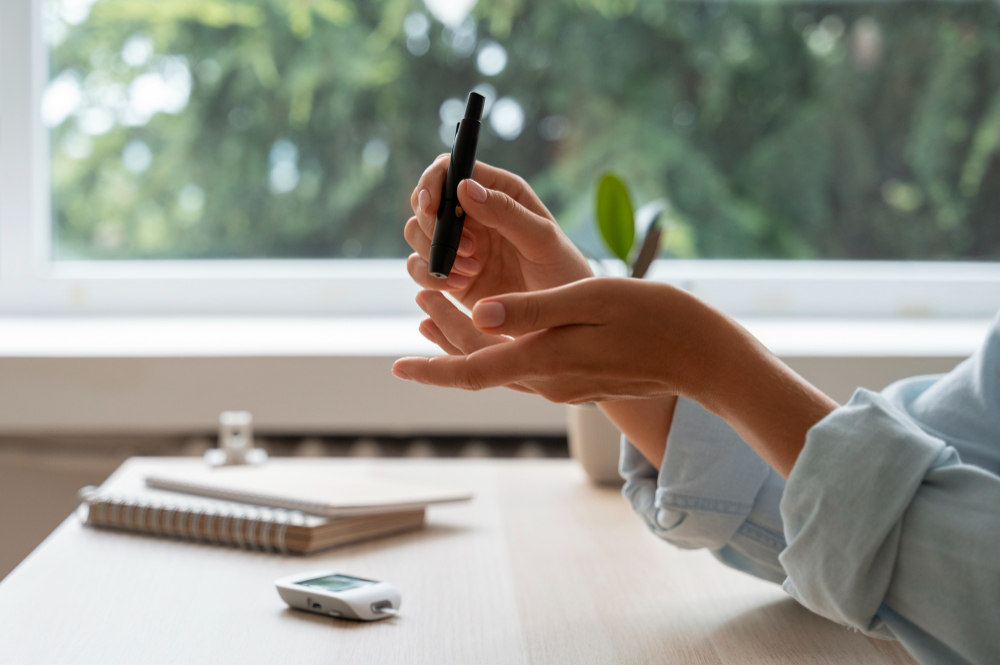Home blood pressure monitoring often plays a vital role in managing hypertension or simply staying aware of cardiovascular health. Among various types of devices, an upper arm (bicep) cuff-style monitor is widely recommended. The American Heart Association advises using an automatic, upper arm cuff monitor because wrist or finger devices tend to be less reliable.
An accurate home monitor supports health professionals in tracking treatment effectiveness, confirming high readings, and detecting masked hypertension.
| Key Criteria When Choosing an Upper Arm Monitor

Proper Cuff Size Is Essential
Getting the correct cuff size is critical. If the cuff is too small, readings tend to be falsely high; if it’s too large, results may come out too low.
Measure your upper arm around the midpoint between shoulder and elbow to find your correct size.
Many experts recommend cuffs whose internal bladder wraps at least 80% of the arm circumference.
Use a Validated Device
Opt for a blood pressure monitor that has undergone clinical validation. Validated devices have been tested for accuracy by independent organizations.
These devices give greater confidence that your measurements are reliable and useful for medical decision-making.
Comfortable and Practical Features
- A large, readable screen makes checking results easier.
- Memory storage helps you track readings over days or weeks.
- Multiple-user capability can be useful for shared monitoring.
- If you prefer digital tracking, consider models with app or Bluetooth support.
- Make sure the monitor works with a power source that makes sense for your routine (battery vs. adapter).
| How to Use an Upper Arm Monitor Correctly

Prepare Yourself Before Measuring
Rest quietly for at least 5 minutes before taking a reading. Avoid caffeine, exercise, or smoking 30 minutes prior.
Make sure your bladder is empty, as a full bladder can elevate readings.
Position Yourself Comfortably
Sit with your back supported, feet flat on the floor, and legs uncrossed.
Rest your arm on a flat surface, such as a table, and keep the cuff at heart level.
If your arm hangs down or rests on your lap, readings may be falsely elevated.
Apply the Cuff Correctly
Wrap the cuff around your bare upper arm, about 1–2 cm above your elbow bend.
Secure it so it is snug but not too tight—you should be able to slip one or two fingers underneath.
Take Consistent Readings
- Measure at the same times each day to track trends.
- Take two readings, about one minute apart, and record both.
- Avoid talking or moving while the monitor is inflating or taking measurements.
| Common Pitfalls and How to Avoid Them

- Using a cuff that does not match your arm size can lead to significantly incorrect results.
- Skipping periodic checks: It’s wise to bring your home monitor to your healthcare provider occasionally so they can compare readings with their clinical instruments.
- Ignoring long-term drift: Over time, some monitors may lose accuracy. Recalibration or device replacement may be necessary.
- Measuring in the wrong body position—such as standing, or with the arm unsupported—can skew results.
| Why Accurate Home Readings Matter
Consistent, accurate measurements from a validated upper arm monitor help you and your healthcare team to:
- Detect white coat hypertension (high readings only at the clinic) or masked hypertension (normal in the clinic, high at home).
- Adjust medications more precisely.
- Monitor how lifestyle changes like diet, exercise, or stress management affect your blood pressure.
- Prevent misdiagnosis by minimizing measurement error due to poor technique or incorrect cuff size.
| Recommended Products: Trusted Upper Arm Blood Pressure Monitors for Home Use
| Invaxe Blood Pressure Machine – Automatic Upper Arm BP Monitor (2×199 Readout, 4.5-Inch Backlit Screen)

“Clarity and accuracy in every reading.”
This model is ideal for those who value simplicity, large display visibility, and reliability. With a 4.5-inch backlit screen, it ensures clear readings even in low-light conditions. The adjustable cuff (9–17 inches) fits a wide range of arm sizes, while its arrhythmia detection feature helps identify irregular heartbeats.
It also supports dual-user memory with up to 199 readings each, making it perfect for family use and long-term tracking of blood pressure trends.
| Alcedo Blood Pressure Monitor for Home Use – Automatic Digital BP Machine with Talking Function

“Ease of use meets accessible care.”
The Alcedo monitor stands out for its voice-guided measurement system, which makes it especially helpful for seniors or visually impaired users. It provides accurate, one-touch measurements and features a large LCD screen with clearly displayed systolic, diastolic, and pulse readings.
The dual-user memory stores up to 120 readings per user, allowing consistent monitoring for two individuals. Its comfort-fit cuff and clear audio guidance enhance convenience and confidence in home monitoring.
| iHealth Track Smart Upper Arm Blood Pressure Monitor – Bluetooth Compatible for iOS & Android

“Smart tracking for modern health management.”
Designed for users who appreciate digital connectivity, the iHealth Track monitor automatically syncs readings to the iHealth MyVitals app via Bluetooth. Compatible with both iOS and Android, it allows seamless data storage, graphing, and sharing with healthcare providers.
The wide-range cuff fits standard to large adult arms, and its one-button operation makes it effortless to use. The device is clinically validated for accuracy, combining smart technology with medical precision for proactive health management.
| Frequently Asked Questions (FAQ)
Q1. How do I choose the right upper arm blood pressure monitor for home use?
A. Look for a device that fits your arm size comfortably, provides clinically validated accuracy, and offers features suited to your needs — such as memory storage for multiple users, large display screens, or Bluetooth syncing. Monitors like the iHealth Track Smart BP Monitor offer mobile app connectivity, while the Alcedo BP Monitor includes a talking function for easy use.
Q2. Are upper arm blood pressure monitors more accurate than wrist monitors?
A. Yes. Upper arm blood pressure monitors are generally considered more accurate than wrist models because they measure blood flow at heart level. Medical professionals also recommend upper arm types for consistent and clinically reliable readings.
Q3. What cuff size do I need for accurate readings?
A. It’s important that the cuff fits your upper arm circumference correctly. Most monitors, such as the Automatic Upper Arm Blood Pressure Machine, come with an adjustable cuff range (typically 9–17 inches) to fit a wide variety of users. Always measure your arm before purchasing to ensure a proper fit.
Q4. Can multiple users share one blood pressure monitor?
A. Absolutely. Many models include memory storage for two users. For example, the Alcedo BP Monitor allows two users to each store up to 120 readings, while the Automatic 2×199 Readout Monitor stores nearly double that — perfect for families.
Q5. How often should I check my blood pressure at home?
A. For most people, taking readings twice a day — once in the morning and once in the evening — is ideal. Record your results consistently and share them with your healthcare provider for proper evaluation. Smart models like iHealth Track automatically log your readings in an app for easy tracking.
Q6. Do these monitors detect irregular heartbeats or arrhythmias?
A. Yes. Many upper arm monitors, including the Automatic Upper Arm Blood Pressure Machine, have built-in arrhythmia detection that alerts you to irregular heartbeat patterns. However, if irregular readings appear often, consult a healthcare professional for diagnosis.
Q7. How can I ensure accurate results when measuring my blood pressure?
A. Sit calmly for 5 minutes before measuring, rest your arm at heart level, and avoid caffeine or exercise 30 minutes beforehand. Keep your feet flat on the floor and don’t talk during the measurement. Consistency in timing and posture leads to more accurate readings.
Q8. What’s the benefit of Bluetooth or talking features?
A. Bluetooth connectivity, found in the iHealth Track, lets you sync results to your smartphone for long-term tracking and sharing with your doctor. Talking features, like those on the Alcedo Monitor, read results aloud — a great help for seniors or those with vision difficulties.
❀ Conclusion

Having a reliable upper arm blood pressure monitor at home empowers you to take a proactive role in your heart health. By selecting a validated device, ensuring the correct cuff size, and using proper technique, your readings are likely to be much more accurate and meaningful.
With consistent, well-measured data, you support your healthcare provider’s efforts to make informed decisions. Your commitment to accurate self-monitoring can make a real difference in long-term wellness and blood pressure control.
References
- American Heart Association – Home Blood Pressure Monitoring (www.heart.org)
- AMA 7-Step SMBP Quick Guide (American Medical Association)
- Blood Pressure UK Testing Guidelines (bloodpressureuk.org)
- Choosing a Home BP Monitor (AHA toolbox) (www.heart.org)
- Accurate Arm Positioning for BP Measurement (bloodpressuredb.com)
- Tips for Accurate BP Monitoring (Urion Health) (urionhealth.com)
- Study on Cuff Size Mismatch in Home Monitors (www.heart.org)









